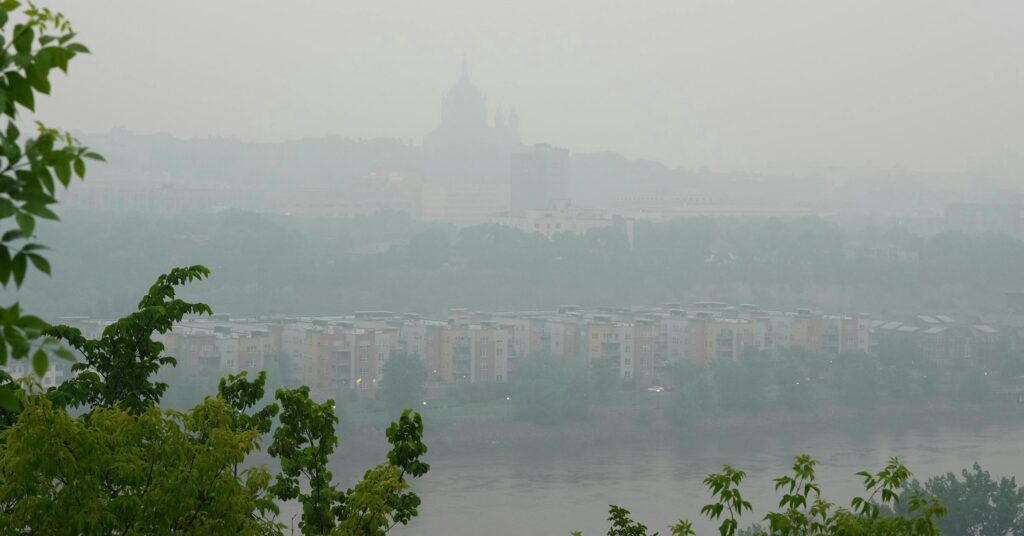As smoke from Canadian wildfires continues to spread, air quality in the Midwest and Northeast has significantly deteriorated, prompting health officials to issue advisories for affected areas. The Iowa Department of Natural Resources (DNR) has specifically recommended several precautions to help mitigate the health risks posed by poor air quality. These include:
- Stay indoors as much as possible, especially during times of high smoke concentration.
- Monitor local air quality reports to stay updated on Air Quality Index (AQI) levels.
- Limit physical exertion, particularly outdoor activities.
- Use air purifiers indoors to reduce the effects of airborne pollutants.
- Avoid unnecessary exposure if you belong to sensitive populations, including children, the elderly, and individuals with respiratory conditions.
Transitioning Conditions: A Glimmer of Hope
While air quality alerts are currently affecting several regions, there is some optimism on the horizon. Meteorologists suggest that weather patterns may eventually bring cleaner air into Minnesota, helping to alleviate the hazardous conditions that have plagued the state. However, experts caution that these improvements could be short-lived. Wildfires tend to peak in the summer months, which means that more severe air quality issues are likely as the summer progresses.
Meteorologist Lueck expressed cautious optimism, saying, “There is a reasonable chance Minnesota and surrounding areas will see more severe alerts this summer as wildfire seasons tend to peak in July and August.” This cyclical understanding of seasonal weather patterns highlights the need for continued vigilance as fire-related activities remain a threat.
The Ongoing Impact of Wildfires
The effects of Canadian wildfires on air quality have been far-reaching, especially across the Midwest and Northeast, with air quality advisories becoming commonplace. As wildfires persist and spread, the health impacts can be severe. For individuals living in areas impacted by the smoke, maintaining awareness of air quality levels is critical.
In addition to health risks, the need for effective communication between state agencies and the public is more urgent than ever. Health advisories and guidance on protective actions are essential for helping communities minimize the negative health effects associated with poor air quality.
Looking Ahead: Future Considerations
Looking forward, advancements in weather forecasting and air quality monitoring will be crucial in helping communities better prepare for and respond to future wildfire seasons. As the frequency and intensity of wildfires increase, addressing their impact on public health will remain a key priority for both state and federal authorities.
Meteorologists and environmental experts agree that the need for vigilance will persist throughout the summer. As wildfire seasons peak, air quality in affected regions is likely to fluctuate, making it critical for residents to take necessary precautions and stay informed.
Conclusion: A Call for Ongoing Vigilance
The current air quality crisis serves as a reminder of the unpredictable and ongoing threat posed by wildfires. As air quality deteriorates, individuals in affected areas must heed the advice of health officials and take proactive steps to minimize exposure. With the likelihood of more severe air quality alerts as the wildfire season progresses, it is clear that continued preparedness and communication will be essential.
In the coming months, state and federal authorities must prioritize efforts to improve air quality monitoring systems and ensure that public health responses remain swift and effective. With the increase in wildfire activity due to climate change, protecting public health will require long-term strategies and coordinated action across all levels of government.

